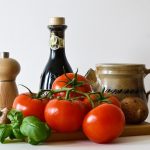Passover, or Pesach in Hebrew, is a significant Jewish holiday that commemorates the liberation of the Israelites from slavery in ancient Egypt. This festival, celebrated over eight days (seven days in Israel), is rich in tradition, symbolism, and culinary delights. The Passover meal, known as the Seder, is a central part of the celebration, bringing families and communities together to retell the story of the Exodus and partake in symbolic foods that represent various aspects of the holiday’s significance.
The preparations for Passover typically begin weeks in advance, as families clean their homes to remove all traces of leavened bread, known as chametz, which is forbidden during the holiday. This meticulous cleaning process, called “spring cleaning” by many, symbolizes the removal of spiritual impurities and the pursuit of freedom from both physical and metaphorical bondage.
As the holiday approaches, households stock up on kosher for Passover ingredients, ensuring that every aspect of the Seder meal complies with the dietary restrictions outlined in Jewish law. One of the most iconic symbols of Passover is matzo, unleavened bread that serves as a reminder of the haste with which the Israelites fled Egypt, leaving no time for their bread to rise. Matzo is prominently featured throughout the Seder and is incorporated into various dishes, such as matzo ball soup and matzo brei, a savory dish made with eggs and matzo.
The centerpiece of the Seder plate, a ceremonial plate containing symbolic foods, is laden with meaning and significance. Maror, or bitter herbs, represents the bitterness of slavery, typically represented by horseradish or another pungent herb. Charoset, a sweet mixture of chopped apples, nuts, wine, and spices, symbolizes the mortar used by the Israelites in building during their enslavement. The contrast between the bitterness of the maror and the sweetness of the charoset serves as a poignant reminder of the complexities of the Jewish experience.
Other symbolic foods on the Seder plate include karpas, a green vegetable such as parsley or celery, signifying spring and the cycle of renewal, and zeroa, a roasted shank bone or chicken neck, representing the Paschal lamb sacrificed during the days of the Temple in Jerusalem. Additionally, a roasted egg, known as beitzah, symbolizes mourning and rebirth, evoking themes of loss and hope intertwined throughout Jewish history.
As the Seder meal commences, participants follow a prescribed order of rituals and readings outlined in the Haggadah, a text that guides the retelling of the Exodus story. The Seder plate serves as a visual aid, prompting discussions and reflections on the significance of each symbol and their relevance to contemporary life.
Beyond the ceremonial foods of the Seder plate, Passover meals feature a rich array of traditional dishes that vary across different Jewish communities and geographic regions. Ashkenazi Jews, with roots in Eastern Europe, may enjoy gefilte fish, a dish of ground fish served with horseradish, and brisket, a savory and slow-cooked meat dish. Sephardic Jews, hailing from the Mediterranean and Middle Eastern regions, might incorporate rice, legumes, and a wider variety of spices into their Passover menus, reflecting their culinary traditions.
Throughout the holiday, families gather to share meals rich in symbolism and significance, passing down recipes and rituals from generation to generation. The act of breaking bread, or in this case, matzo, fosters connections and strengthens bonds within the Jewish community, reinforcing a sense of shared history and identity.
In addition to the Seder meal, Passover observance includes dietary restrictions that prohibit the consumption of chametz, leavened foods made from wheat, barley, rye, oats, or spelt. Instead, Passover-friendly alternatives such as matzo meal, potato starch, and nut flours are used to create a wide range of baked goods, desserts, and other culinary delights.
As the holiday draws to a close, Jews around the world gather for a final festive meal known as the Feast of Passover, or Seudat Mashiach. This celebratory meal marks the conclusion of the holiday and serves as a reminder of the enduring themes of liberation, redemption, and renewal that lie at the heart of the Passover story.
Passover then is a time of reflection, remembrance, and celebration for the Jewish people, encompassing a rich tapestry of tradition, symbolism, and culinary delights. Through the observance of the Seder meal and the adherence to dietary restrictions, Jews around the world come together to commemorate their ancestors’ journey from slavery to freedom and to reaffirm their commitment to the values of justice, compassion, and community.


Leave a Reply